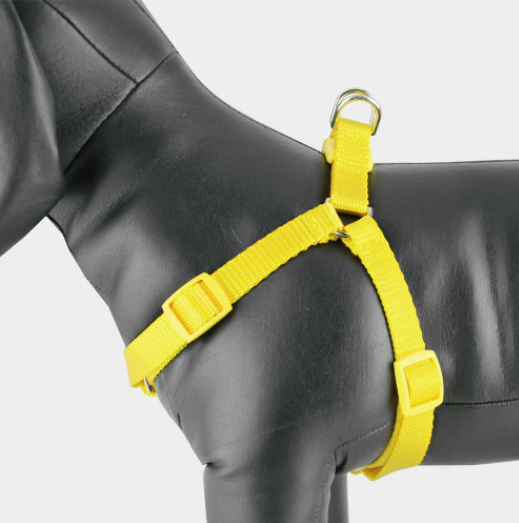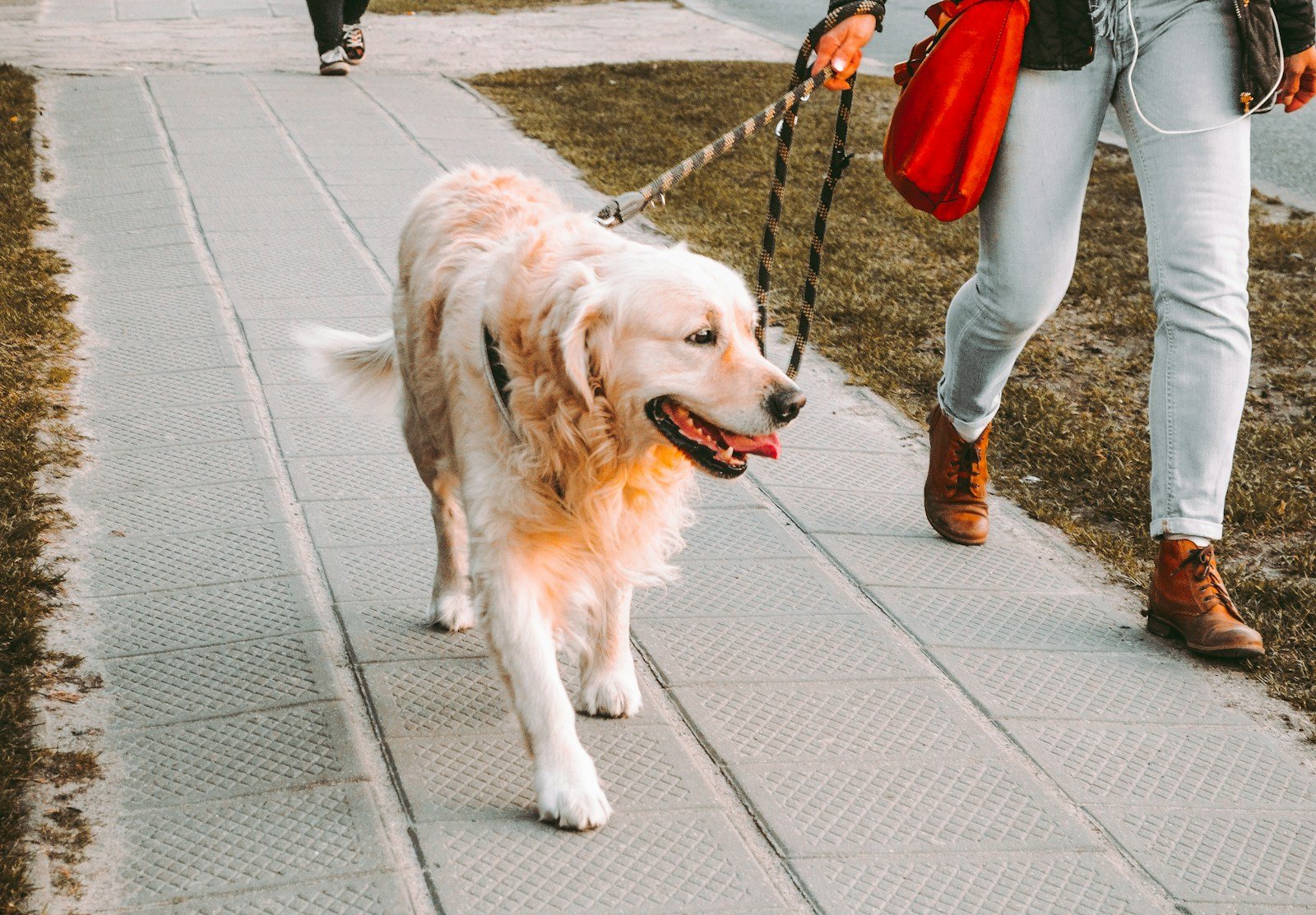
One of the easiest training lessons you will ever encounter is harness training. Why is this? It is because your dog already knows the basics of how to function on a collar and leash system and walking is within their natural range of movement. You are not asking the dog to do anything outside of its normal field of activity. All you are doing is putting an extension on the collar and leash, which allows for more control of the animal without wrenching the dog’s neck to achieve this goal.
Let them get used to it
To harness train your dog, you must first get your dog used to the apparatus. Let them explore it, sniff it and generally just look it over and become comfortable with it. This will assure the dog that that this is not some form of torture that you have devised. The dog will be more willing not to resist in the next step of training, which is placing the harness on the dog.
Learn how to fit harness
Most often harnesses are placed on the dog by slipping the collar portion over the head and then wrapping the torso section around the dog just behind the front legs. Many systems use a plastic snap connector which joins the pieces together thus forming two loops, one around the neck and the other around the torso, with a connecting piece in between.
Let them explore the harness
Now that we have the harness on your pet, the hard part is over. You get to have some fun praising your pet for cooperating so well and rewarding them. Give them a few minutes to explore the new sensation of the harness without the leash while rewarding them for not trying to remove it. The rewards will help with the next part of the training as well, which is getting them to walk while on a harness and leash system.
Walk in front with treats
My favorite method for this is to find someone who can walk a few feet in front of the dog and myself and offer some kind of treat such as food or a favorite toy. The dog quickly learns that the harness is not restrictive and will follow the treats. Walk with your dog and allow them to sense that this device is not an encroachment on their freedom. If the dog begins to pull you along, say “no”, and stand in one place just as in leash training. This will teach the dog that, while the harness does not impede their normal movements, there are limits to what they are allowed. In no time at all, you should have a pet that will happily be haltered and be ready to walk at your side rather than pulling you along over hill and vale.
Use the harness as a handle
The harness also has the added advantage of being a good handle should you need more control of a situation such as when aggressive behaviors are displayed. There is a simple technique to deal with this and avoid injuries to your pet or yourself. If you encounter a situation where you think aggression may be an issue quickly take in all slack on the leash and grab the harness between the collar and the torso loop. By pulling back on this section, you will raise your dog’s front legs off the ground and distract them from their aggressive behavior. In smaller dogs, it is possible to lift the dog completely free of danger in this manner.







